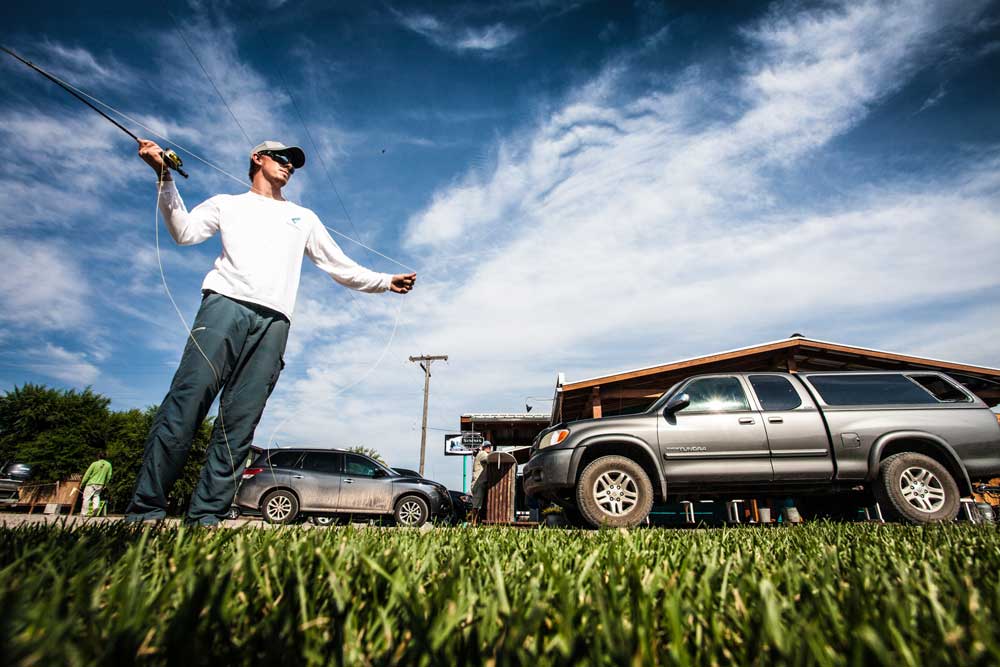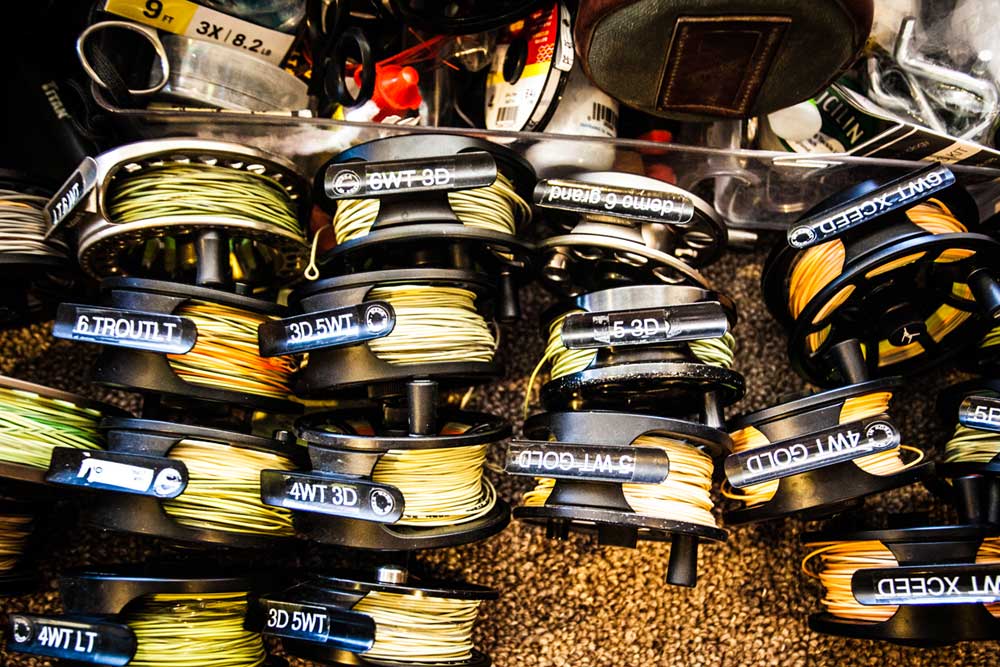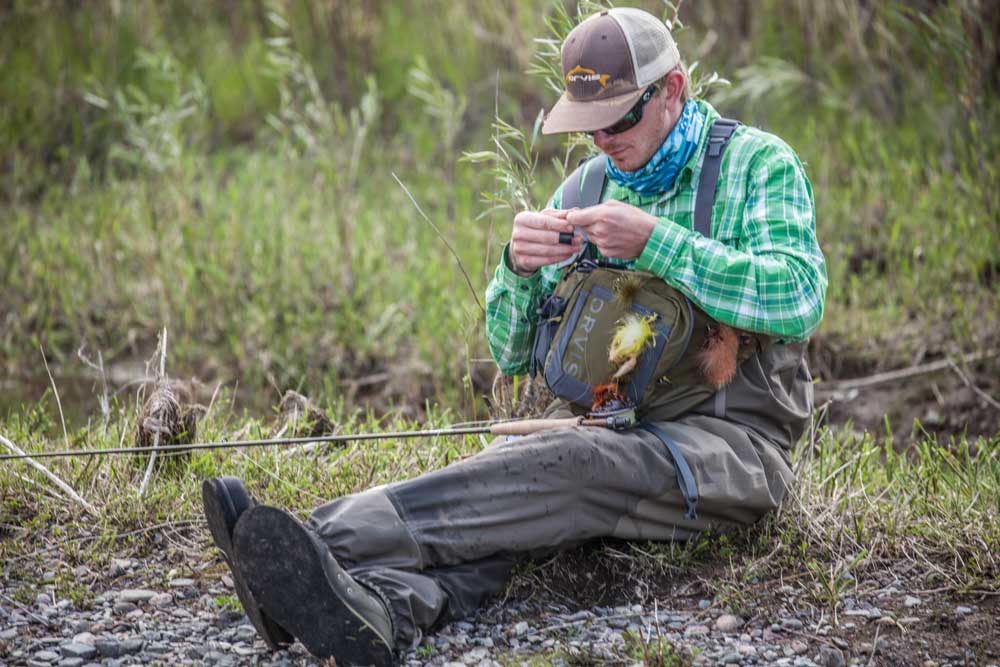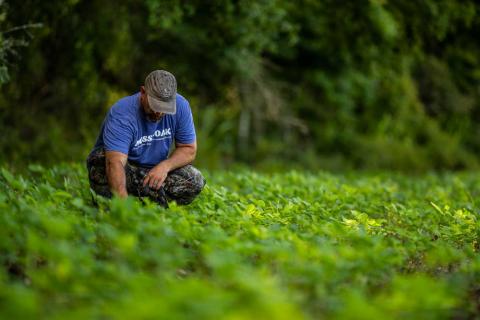Jess McGlothlin
You’re heading West to chase trout, life in the mountains, and just generally enjoy yourself. Like any fishing or hunting trip, a little preparation goes a long way when planning your Westward adventure. Every fishery is different and will offer both its own challenges and rewards. If you booked through an outfitter or guide, ask them what you should be doing to prepare. If you’re heading out on a DIY trip, do your research before arriving, then visit a local fly shop to pick up a few regional flies and peruse for a fishing report.

Regardless of your destination, here are a few things you should do in the months leading up to your Western fly-fishing trip:
Practice Casting
If you’re heading to the Rocky Mountain West, the odds are high you’ll be fishing with a 5- or 6-weight rod. So grab one and head out to a local creek or lake to practice. No water? Head to the backyard, setting out “targets” with cups or frisbees, and practice your aim. Cast in calm weather and in wind, in bright light and low light. Work on short pick-ups and longer hauls. There’s a reason they say, “practice makes perfect,” and when you’re casting to a picky, caddis-eating brown trout, you’ll be glad you put in the time.
Pay Attention to Your Fitness
Anglers often tend to overlook basic fitness before heading out on a trip, only to end up sore and cranky on their third day of fishing. Especially if you’ve booked a walk-and-wade trip, spend some time moving your body in the months before your trip. It can be as simple as a stroll around the neighborhood after dinner (toss on your fishing pack and go for a walk to ensure it’s comfortable). If you’re feeling ambitious, add in some strength training and stretching. Every little bit will help you during long days on the water.
Inventory Your Gear
Now is the time to take inventory of your kit. Take out your rods and inspect them for cracks or loose guides. Strip fly lines off your reels and look for cracking, snags, or any signs of wear. Service your reels (most reel manuals can now be found online, with easy instructions). Research what flies often work on your target river, and either order some or tie up a few yourself. Take a peek at your waders, wading boots, pack, and other key equipment, looking for signs of wear, mildew, or breakages. The last thing you want is for your equipment to fail in the middle of your dream guide day.

Pack Accordingly
Even in the summertime, mornings and evenings at elevation can be chilly. Even if the forecast says the day will hit 90F, when you put on the water in the early morning, it could be 40F. Ensure you pack along a lightweight, warm jacket for cool mornings and evenings, and bring along a sturdy raincoat even if the forecast says there’s zero chance of rain. Summer storms are common along the Rocky Mountain front.
Plan to keep yourself protected from the sun. You’ll often see top trout guides in the West wearing long sleeves and long pants, even on the season’s hottest days. Modern tech fabrics breathe and wick moisture extremely well, while still offering high sun protection. Look for the UPF (Ultraviolet Protection Factor) on clothing, which indicates how much UV radiation (both UVB and UVA) a fabric allows to reach your skin. Broad-brimmed hats, sun gloves, and sunscreen (don’t forget your lips!) are also key for summertime trout fishing.

Prepare to Listen
Perhaps most of all, prepare to listen to your guide. Be open to taking advice, and communicate clearly. Most guides are teachers—they’re in their chosen profession because they like helping people better their angling, and enjoy helping fishermen experience their fishery. If you prefer to not get casting help from your guide, discuss it at the beginning of the day before you both get frustrated. If you’re there to learn, discuss that too! Setting clear expectations makes both your guide’s and your own day better. You’ll both be more relaxed knowing what the other is hoping to get out of the day, and a more relaxed angler is a more effective one.




























